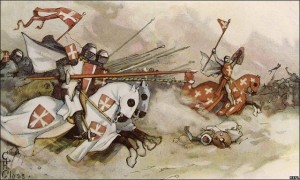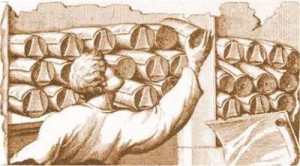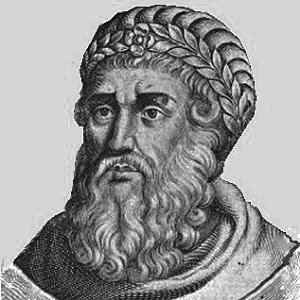In November of 1095 at Clermont, France, Pope Urban II gave an impassioned speech that led to the start of the First Crusade. It touched off a series of military actions that spanned more than two centuries, in which Christian knights—mostly of French and German origin—pushed into the Holy Land to do battle with the forces of Islam. Continue reading
Contradictions (3): Angels or Men?
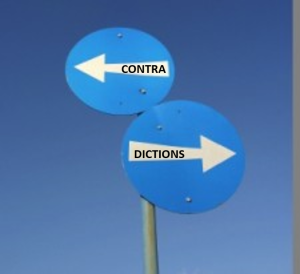 All four Gospels describe the events that happened when female followers of Jesus discovered his body was missing from the tomb on Easter morning. The four accounts are quite similar to one another and agree on the major points.
All four Gospels describe the events that happened when female followers of Jesus discovered his body was missing from the tomb on Easter morning. The four accounts are quite similar to one another and agree on the major points.
However, there are some differences between them, and there appear to be slight differences recorded in the order of events on that momentous and confusing morning. Critics over the years have seized upon these differences, claiming that the accounts contradict one another. Such contradictions, they add, are evidence of the gospel accounts’ historical unreliability. Continue reading
Contradictions (2): Which Women Visited Jesus’ Tomb?
 The gospel accounts of what happened at Jesus’ tomb on Easter Sunday are another favorite target of Bible critics. They point to several inconsistencies in the accounts’ details to illustrate that the gospels are inaccurate and contradictory.
The gospel accounts of what happened at Jesus’ tomb on Easter Sunday are another favorite target of Bible critics. They point to several inconsistencies in the accounts’ details to illustrate that the gospels are inaccurate and contradictory.
In fact, a close reading of the text shows neither inaccuracy nor contradiction. Those who use this as a means of tearing down the text’s credibility do so either because they’re biased and have never actually read the text, or because they are intentionally attempting to deceive others into believing that these accounts are contradictory. Continue reading
How and When the New Testament Was Written
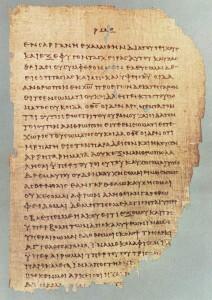
Papyrus 46, an ancient fragment of a copy of Paul’s 2nd letter to the Corinthian church, likely dating to 175-225 A.D.
Christianity is unique among world religions because it is so firmly rooted in history. Its sacred documents, collected within the New Testament (NT), are not simply the writings of a single person, nor are they just “pronouncements of divine wisdom” devoid of any historical context. Rather, the books of the New Testament are incredibly important historical documents.
They bring to us information about various peoples and societies, governments, laws, events, political conditions, and daily life during the first century. As historical documents, their accuracy can be judged against other sources from the same time period. The NT documents have been more closely scrutinized than any others in history and, contrary to some critics, they actually have a great track record for accuracy. Numerous times, critical scholars have declared them to be in error, only to be proven wrong by subsequent archeological or documentary finds.
But how did we get these documents? Continue reading
The Gospels Were Not Anonymous
The Christian church teaches that the four canonical gospels—the New Testament accounts of Jesus’ birth, teachings, death, and resurrection—were written by eyewitnesses to the events they describe, or by persons with access to eyewitness testimony. Church history tells us that the gospels of John and Matthew, for example, were written by two of Jesus’ original twelve disciples. The Gospel According to Mark was written, we are told, by a follower of Peter, another disciple. Finally, The Gospel According to Luke was apparently written by a companion of Paul who interviewed disciples and other eyewitnesses. As a result, the church argues that these documents reflect direct, eyewitness testimony, and are reliable historical documents. Continue reading
Busted (8): The Question of Jesus and the Demoniac
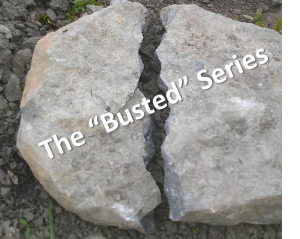 The story of Jesus and the demoniac, as told in Mark 5, Matthew 8, and Luke 8 is a familiar one in which Jesus encounters a man possessed by a large number of demons. After a brief conversation, Jesus commands the “legion” to leave the man and enter a herd of nearby pigs. These pigs then rush down a steep incline and drown in the sea below.
The story of Jesus and the demoniac, as told in Mark 5, Matthew 8, and Luke 8 is a familiar one in which Jesus encounters a man possessed by a large number of demons. After a brief conversation, Jesus commands the “legion” to leave the man and enter a herd of nearby pigs. These pigs then rush down a steep incline and drown in the sea below.
To Bible critics, this story is a potential gold mine. Across these parallel accounts, they claim, we have both historical error and contradiction that clearly prove the Bible is neither inerrant nor even reliable. Continue reading
Contradictions (1): On Which Day Did Jesus Die?
 Critics point to alleged errors and contradictions in the Bible to show that it is neither inspired nor the work of eyewitnesses. These critics claim that if the biblical writers can’t agree on even the simplest details, how can we possibly believe what they have to say about important spiritual matters? One such charge is that the gospel writers cannot even agree whether Jesus was crucified on the first day of Passover or the day before Passover. Continue reading
Critics point to alleged errors and contradictions in the Bible to show that it is neither inspired nor the work of eyewitnesses. These critics claim that if the biblical writers can’t agree on even the simplest details, how can we possibly believe what they have to say about important spiritual matters? One such charge is that the gospel writers cannot even agree whether Jesus was crucified on the first day of Passover or the day before Passover. Continue reading
Busted (7): The Book of Acts Agrees With the Skeptics!?
Many anti-Christian commentators argue that the gospels and other New Testament documents, contrary to Church teaching, could not have been written by direct eyewitnesses to the events they describe. This is because, they argue, Jesus and his disciples were just simple, illiterate, Aramaic-speaking peasants who probably couldn’t write their own names, let alone a Greek gospel account. The argument is weak, and we have countered it in other articles (here and here).
However, there is another angle to this argument that we should address. Let’s allow Matthew Ferguson, a Ph.D. hopeful—and activist atheist—from UC-Irvine to lay it out for us: Continue reading
Busted (6): The Massacre of the Innocents…Did It Happen?
The second chapter of Matthew relates a story found in no other gospel, known as the Massacre of the Innocents. In this story, King Herod (the king of Judea and client of Rome) orders the killing of all boys less than two years of age in Bethlehem. Herod takes this “scorched earth” approach in a desperate attempt to find and kill the recently-born Jesus, who he believes will grow to become a threat to his throne.
Critics have long alleged that this story never happened, saying that the gospel author just made it up to create a fulfillment of prophecy. Continue reading
Resources on New Testament History & Apologetics
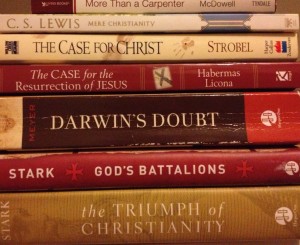 Earlier this week, I promised a friend that I would provide for him a list of resources to aid in his studies about the New Testament, how it developed, how we know it’s true, and how we can combat the false information about Christianity that seems to proliferate both on- and off-line. Well, this post makes good on that promise. It’s an expanded version of a list that I posted some time ago.
Earlier this week, I promised a friend that I would provide for him a list of resources to aid in his studies about the New Testament, how it developed, how we know it’s true, and how we can combat the false information about Christianity that seems to proliferate both on- and off-line. Well, this post makes good on that promise. It’s an expanded version of a list that I posted some time ago.
Obviously, this list is far from exhaustive, but it does provide a wide range of excellent resources. Hopefully, he—and you—will find it useful. Continue reading

